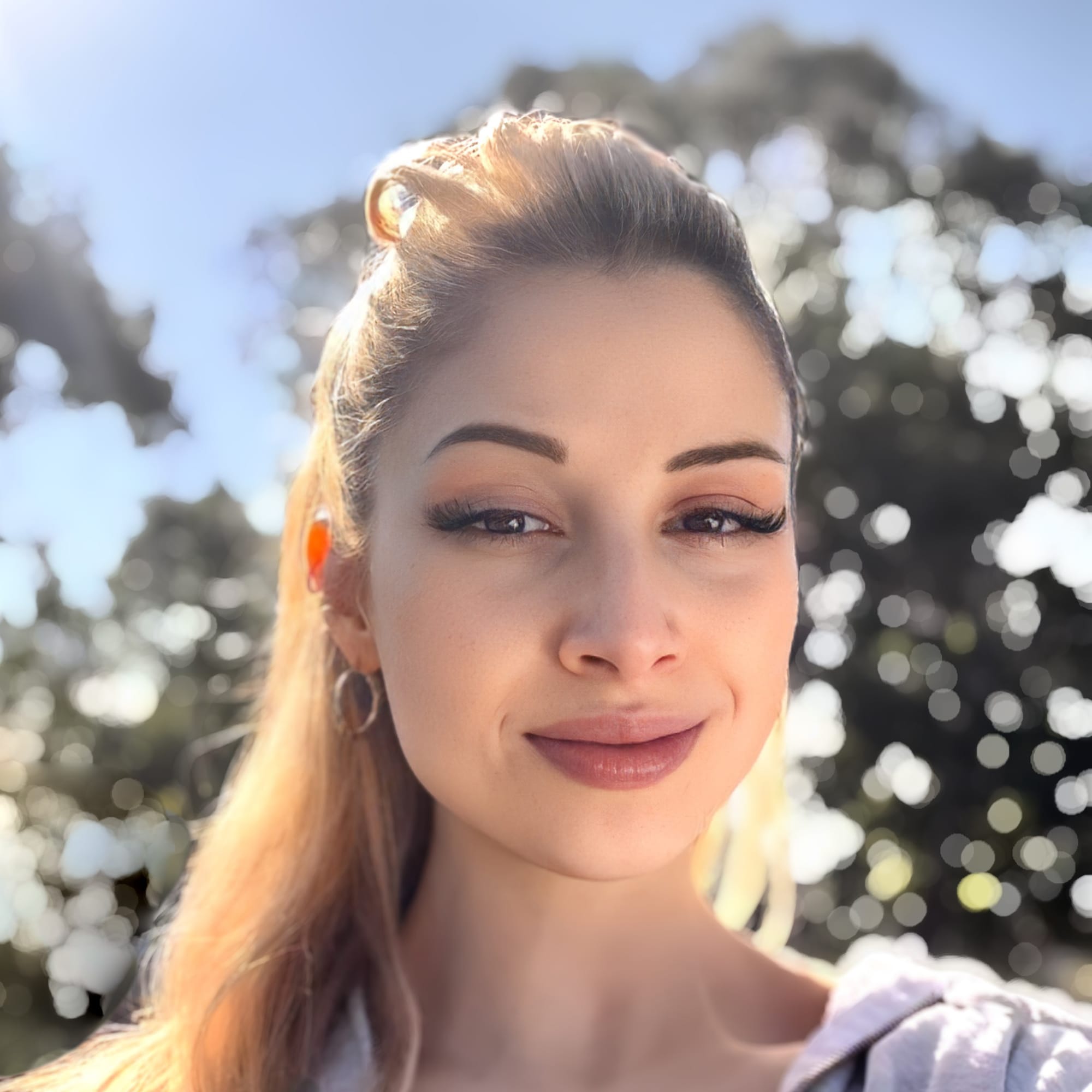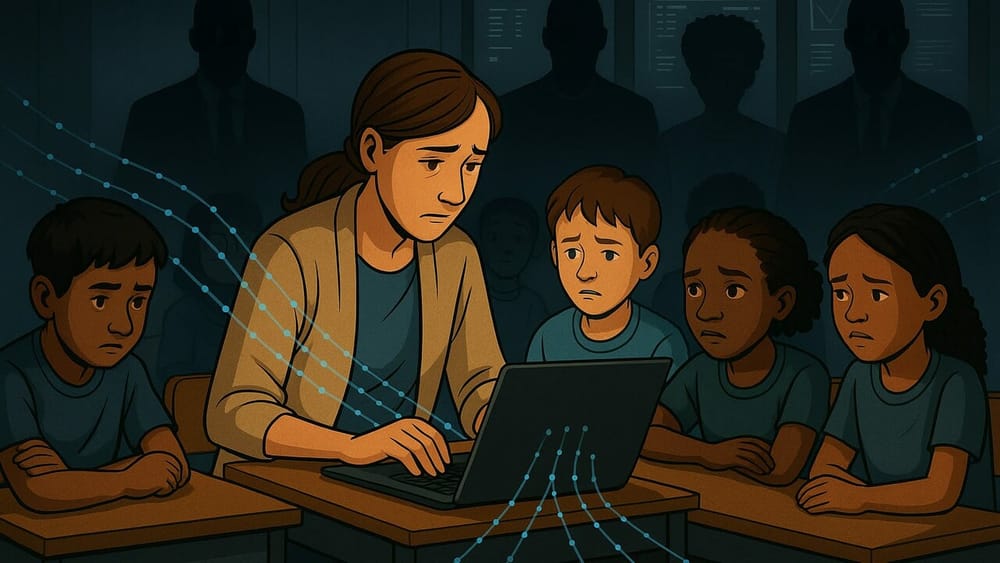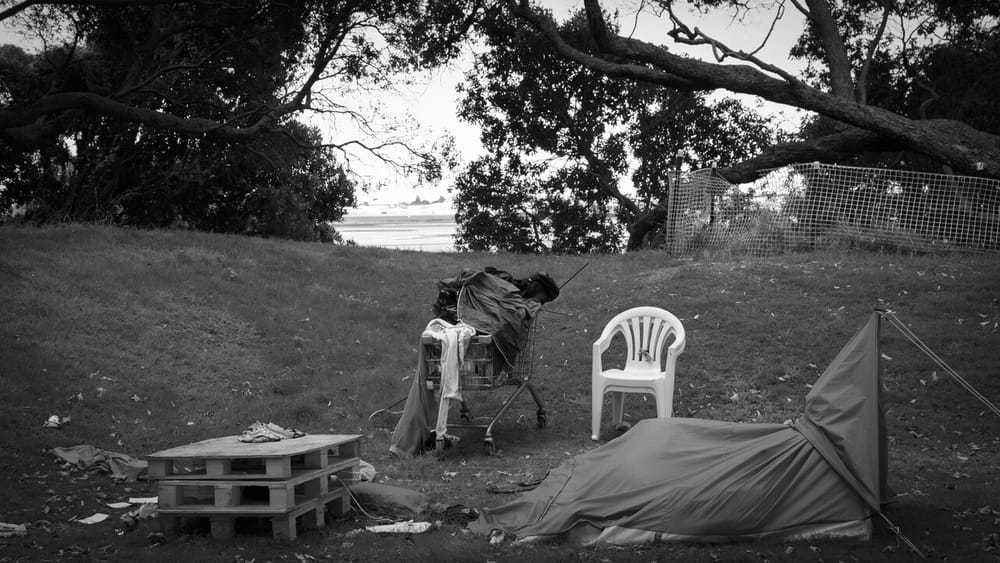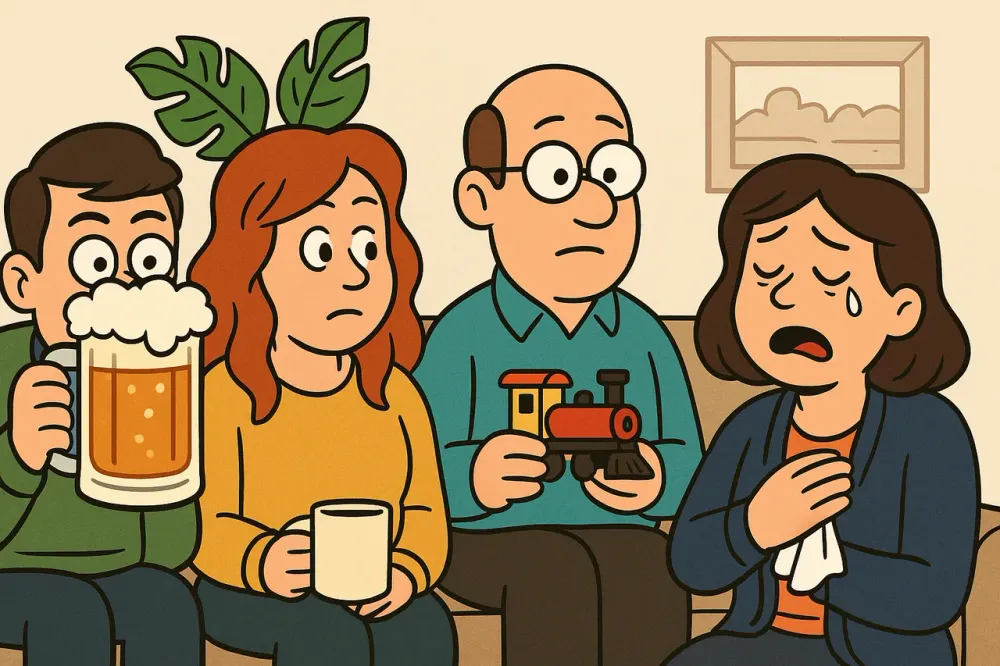Dear reader,
The premise of this story is about how places form identity. Using Marc Auge’s theory of non-place as a framework, I reflect on my experiences growing up in my bedroom and my ballet studio—specifically, how they witnessed the progression of my eating disorder.
I discuss the space of my ballet studio and how the mirrors were both advantageous and deleterious to my headspace. Then, I look at the representations of ballet in popular culture, such as the film Black Swan, narrowing in on Nina Sawyer's bedroom. Like hers, my room is a space caught between my past and present self, filled with things that silently remind me of my history of mental illness that I’m still finding ways of leaving behind.
Throughout the piece, I draw upon Augé's ideas of non-place, but towards the end, I explore how such spaces have been beneficial for stepping out of my past. The banality of spaces that we often overlook (waiting rooms, supermarkets, and airports) can offer us ways of seeing beyond ourselves. We encounter people who have lived separate lives from ours, and we may never see them again, which is why this space can feel both alienating and freeing.
Personally, in non-place, I can separate my illness from myself; I see that I am more than the past that lingers in my home.
I hope you take something from reading this in whatever stage of life and space you’re in.
The essence of the spaces we frequent become localised within ourselves. We are both products of, and active contributors to, shaping our environment. A room has arbitrary significance until we frequent it enough or fill it with our belongings. Then, familiarisation permeates, and the space becomes a stable ontological state. A place that moors us to our identity.
French anthropologist Marc Augé probes this idea in his 1992 text, Non-place: An Introduction to an Anthropology of Supermodernity. He explores the confluence between transient spaces and the encroaching capitalistic forces that transform these into non-places: liminal spaces that impersonate real places. Airports, elevators and waiting rooms are all examples of non-places, they are transitory and depersonalised: “spaces formed in relation to certain ends.”
What, then, constitutes a non-non-place? What markers must be reached for a space to affirm our attachment to it? If alienation, unease and depersonalisation define a non-place according to Augé, then familiarity, comfort, privacy and safety seem reasonable descriptors of a ‘real’ place.
A favoured place of mine is my bedroom. It is private, warm and even sentient—the walls seem to listen to my thoughts and feelings. My bedroom has marked my progression into interrelating illnesses—anorexia, depression, anxiety—and has witnessed me recover and relapse from each of these. I’ve never found the courage to fully leave home because of the loyalty, refuge and guardianship of my bedroom. Maybe that’s why I can’t unsee illness in myself.
My first memory of my room is white. White walls, white skirting boards, white silence. 14 years ago, my parents renovated the house of their dreams, building a second floor which included my new bedroom. Falling asleep that first night of being in my new room felt surreal and slightly unsettling. No one else had inhabited that space.
Over the years, my bedroom walls became an extension of my body. Memories of my life were bound together by the photos that decorated the walls, like a spattering of stars that charted the shape of my life. Superimposed on the ceiling are years of my thoughts, the ones of dreams taking shape and the ones that recorded the progression of my starving mind.
When I turned 15, I begged my mum to put me into ballet lessons. I was enamoured with the delicate strength required of a dancer to convey a story that has no words. I enrolled with a local studio and began decorating my room with images and artworks of ballerinas. On the white bookshelf opposite my bed sat a framed photo of a ballerina, pointe shoes slung over her shoulder. She was turned away from the camera, her face obscured, while her thin arms and spine were in full view. Her frame epitomised the ideal body shape of a ballet dancer—thin, yet strong. Every night, I gazed upon this photo: an evocation of the body type I desired.
I believed that I could not be a dancer until I looked like the one in that illustration. I was oblivious to the futility of my logic. This kind of thinking paved the way for my eating disorder, anorexia nervosa, which assembled itself quietly, out of view.
Now that there's enough distance between me and my past, I can see that the expectations I set for myself around my physical and mental capacities were established long before I ever wanted to dance. But this pre-existing tendency fully emerged in the environment of dance, in the many hours I spent in the same place, performing the same rituals.
Part of the reason I detest the name given to this type of eating disorder is because of the way it sounds. An-or-ex-ia—the consonants are angular and terse, sounds that pierce the air like a curse. The accompanying imagery is not pleasant either. The word conjures ice and emptiness, like a feeling of hunger. These impressions shuttle me back to the moment I first encountered my ballet studio. Something about it was unsettling, as though the room itself was sick. Maybe it was the wall of mirrors, observing me in silence like a floating eye, or the vinyl floor, varnished and immaculate like a dancer's appearance. I felt small and out of place knowing that I was the new student who had only started ballet at 15—most had begun dancing at the age of five.
I was the eldest in my class, the other girls were between 12 and 14, which made me stand out even more. But that wasn’t a deterrent. I wanted to prove to myself that I could become a good dancer. Once I adapted to the environment, my impressions of the room shifted entirely. When the class began, the music swelled in the room, sweeping away shadows and dust that clung to the narrow corners of the room. No longer was the space a dead thing frozen in silence, but a place that generated flow, rhythm, creativity.
Towards the end of our class, the teacher would draw the velvet curtains closed across the mirror, an exercise to sharpen our kinaesthetic awareness of our bodies. None of us liked this part. We needed to learn to perform a move correctly without relying on the mirror, to recognise the feeling of it, which was more challenging. Our legs and arms shuddered from the effort as the smaller muscles deep within our thighs tensed, forcing us to maintain turn-out.
As much as I feared not having the mirror to self-correct, in a way it was like coming up for air. Repeatedly seeing my body’s reflection in unflattering ways generated a negative feedback loop in my mind. I hated the way my skin would bunch up in small mounds around my hip when I extended my leg in arabesque, or when I could see the fleshy underside of my arm in second position. After class, I would go home and pick at my appearance in privacy, an impulse as habitual as brushing my teeth.
While the glimpses I caught of myself opened lesions for self-criticism, dance afforded me freedom outside of myself. This bound me inside a weird paradox between my body and mind: I didn’t like what I saw in the mirror, but I loved the feeling of dance. Over the years, anorexia gradually alienated my mind from my body, but dance pinned me back in.
Most of Augé's theory grapples with supermodernity and excess, powers that indirectly create non-places. When we trundle through bustling streets on our phones, or rush to catch the departing train, we are far less inclined to care about other people’s problems if they don’t directly involve our own. Non-places are spaces designed for mobility, convenience and consumption, not forging meaningful connections with people.
The most illuminating of Augé's theories for me was the one that revealed the types of places my disordered thinking wanted to consume. According to Augé, the collective force of a group’s shared identity propels a space into becoming somewhere that has an identity itself. This identity emerges from the group’s shared history. Being part of a dance studio meant I could classify myself as a dancer, a definition which armed me with an explanation when strangers asked me why I was so thin. Before I was diagnosed with anorexia, I didn’t take the question personally. In fact, being perceived as thin was validating; it allowed me to justify my frame as a product of skill and not an eating disorder, which circumvented any further questions.
In the everyday world where bodies are hidden beneath clothes, and people blend en masse, I cared less about the way I looked. But in the studio surrounded by mirrors and thin bodies, I became severely self-conscious. Disordered thoughts muttered over each other, competing to be heard against the grain of the music. Ballet teaches the articulation of every gesture and movement with graceful conviction, without showing a whiff of diffidence. Although the mirror reflected my disordered thoughts and perceived body flaws back at me, I also used it to learn how to fake confidence. A straight spine, raised chin and eyes bright with focus concealed any hints of displeasure. Ballet not only taught me how to perform with confidence but also how to mask insecurity.
Dance is a language where the body is used to communicate, where our bodies use us to speak. Communication in non-place is also done through body language but in a far less artistic modality than dance. Body language, however subtle, will tell us something about the people we might approach.
Unlike the strangers who commented on my body in supermarkets, waiting rooms or outside a public toilet, I cared about my teacher’s opinion. She was never critical of my body, thankfully, but under the conditions of dance, I believed I was bettering myself in her eyes. A slimmer body has stronger lines which means there is less in the way of showing off the muscle and limbs protracting into balletic shapes. I was convinced that my appearance determined how often I received her approval.
I remember watching my classmate Amanda's shoulder blades squeeze and contract beneath her pale skin at the barre, wondering if mine looked as slender from behind. I remember marvelling at the high arches of Thalia’s feet that elongated her legs like the neck of a swan. The more I gleaned beauty in other girls' bodies, the more I craved a similar appearance, which speaks to a broader truth about ballet dancers. Their identities are constructed by the archetypes their bodies emulate through dance. I revered ballerinas like Misty Copeland, Natalia Osipova and Fumi Kaneko for their grace and athleticism, replaying their most renowned performances repeatedly, wondering how it would feel to inhabit their bodies. To drown in the audience’s heady gaze, the way mine poured over their bodies.
As much as my relationship between my body and mind was splintering, dancing was my freedom. It was the only time that I didn’t hate my body which was why nothing could make me hate ballet, not even myself. I knew the problem was within me; the art form itself wasn’t to blame. But my spirit continued to buckle under the pressure my body was fighting. I became apathetic towards anything that didn’t involve dance. This also made it difficult for me to regulate my emotions—I did not allow the negative ones to reach the surface, and this meant I lost interest in being anywhere outside of my dance studio or my bedroom. I knew how to exist in both. They were familiar and comfortable, like the trace of my mother's perfume.
One night at dance, I saw my pelvis protruding through the opaque veil of my ballet skirt in the mirror. Wishbone, I thought. My reflection showed weakness, which was how I felt. I thought the studios were unusually cold that night in July, but it was just that I’d lost more body fat. Augé's sentiment about alienation in non-places brushes up against this memory. Depersonalisation, he says, comes from the lack of human connection in transient spaces. True—but what about the alienation that emerges from within? A sense of detachment can exist within familiar places.
My ballet studio and bedroom were places that once held my spirit safely in their walls, but my healthy mind was slowly evaporating, leaving me stranded in a tired, stony body. Gradually, my spirit became trapped within the walls of myself and the walls of the places I loved. How could I find freedom without leaving the spaces that offered the strongest sense of belonging in the world? I didn’t care about anything beyond dance and the seclusion of my room.
Depictions of ballet in popular culture commonly delineate sacrifice and loss as inevitable outcomes of a dancer’s life. The film Black Swan recognises this fate. The story follows Nina Sayers, a brilliant, but self-destructive, dancer whose psychological disturbances lead to her demise. Although Nina is an adult, she exhibits the naïveté of a young girl, owing to her controlling mother who continuously infantilises her. Nina's emotional and psychological state is reflected in her bedroom which is filled with stuffed animals, dolls and pink wallpaper. To embrace the role of the black swan, Nina must learn to embrace her sexually repressed side. In doing so, she undergoes a metamorphosis from the white swan, an archetype of innocence and purity, to the black swan, an alluring, deceptive and untouchable femme fatale.
If the walls of our bedrooms could speak, what would they say about us? What kind of shadowed moments have they witnessed us bear that we refuse to show others?
For many, the significant transformation into adulthood occurs within their bedroom. Dr Kandy James observes this finding with teenage girls specifically. In the privacy of their rooms, they advance and retreat between girlhood and womanhood, adapting to their emerging adult selves while attempting to leave the past behind. Nina's stuffed animals and pink interior walls suspend her on the threshold between adulthood and her former childhood self—a reality I saw unfolding in my own room.
If our age oscillates based on the objects of sentiment that surround us—silent reminders that foist the past back onto ourselves—are we in control of our identities or is our environment? I can't bring myself to throw out my toys, nor my pointe shoes or old leotards. Perhaps this is why the ghost of my former self continues to force itself into my headspace, and why I haven't fully let go of my illness.
Although Black Swan propounds cliches of ballerinas—obsessive, paranoid, anorexic—Nina's compulsion to starve herself for bodily perfection resonated with me. I never danced at an elite level, but I could think like a dancer; I practised the mindset of a dancer. If I looked like one, I was one. This logic propelled my habits of restrictive eating.
Writer Ellen O'Connell Whittet recalls the same experience of starving for attention as an aspiring dancer in her memoir, What You Become in Flight. “When I was average weight, I was an average dancer. When I was shrinking, I was noticed, and when I was noticed, I got the attention I was born wanting,” Whittet writes.
I too craved the attention of my dance teacher, searched her eyes for the whisper of a promise that I had enough potential to accelerate into advanced classes. The harder I fought for the body of a dancer, pushing and stretching my muscles in my bedroom and the studio, the more my dream seemed to take shape in the mirror.
While my hunger dulled, my starving mind looked for ways to feed itself. I found pleasure in watching what other dancers ate. Cubed fruit, lean meats and vegetables were the staple foods in their diets. They ate like they were munching on chips of ice and drank gallons of water. None of them consumed processed food.
Absorbed in diet culture, I began to meticulously count calories and control my portions. Only my mum was privy to the collapse of my mental state. She booked me in to see a dietician who identified my patterns of restrictive eating and showed this to me in my food diary. By then I was 16, dancing three days a week and eating portions the size of my palm. My weight withered to the lowest I'd ever been. This meant I could leap higher, move quicker and feel the warm spasms of hunger more often—a feeling that encouraged further patterns of restrictive eating.
Starvation is self-validating, Whittet says. In the time when she couldn't dance due to injury, her obsession with food restriction replaced her obsession with ballet, giving her a sense of control over “a body that seemed completely beyond [her] will.” Unlike Whittet, my obsession with food and ballet coincided, and the further I fell into restrictive cycles, the more my state of mind became occluded. Like any addiction, it needs time to develop, concealing the inevitable consequences in plain sight.
The dietician who treated me during my third attempt at recovery said that whatever I believed hunger afforded, it would always take more away. Her words continue to hum over my past and into the gaps of my history that only make sense in retrospect. From this vantage point, I can decipher some imprecise understanding of the logic of my hunger. When pushed to physical and mental extremes, my threshold of pain and starvation continued to increase. The more I starved, the easier it was for me to remain hungry until I had lost my appetite, my period and my interests outside of food and ballet.
Walls have a way of absorbing memory. Every sound, secret and word spills into the gaps between skirting boards, eaten by the shadows that hang in the corner. These are the spaces that hold the words of the many arguments my mum and I had over the years as our relationship became increasingly unsteady. By now, my digestion was chronically slow, which meant I had dizzy spells and debilitating exhaustion—these were the worst of the many symptoms and manifested in my unpredictable moods.
My mum knew what I was going through, but we had different understandings of love and how it heals. My mother showed love by trying to help me recognise the faults of my judgement, but I have never responded well to anybody correcting my feelings, as if they were grammatical blunders with an easy fix. Mum said that my symptoms were all in my head. Naming them amplified the feeling that my disordered thinking was dramatising, but these symptoms were my body’s cry for help.
For all the times when Mum tried to help, the way she denied my thoughts as mere delusions only made me retreat further into suffering. Because a mental illness is not just ‘thoughts’ that can be turned off; it is far more complex than that.
Out of anger and the exhaustion of needing to justify the way that I felt to my mother, I would become hysterical—bouts of anger that burst forth in hot tears and loud words. I couldn’t verbalise my pain calmly when I was feeling it. From her perspective, my mind was unstable—and it was—but all I wanted was to be held and heard by her. Just to hear that I was going to be okay. I understood that my outbursts hurt us both. I understood that Mum only wanted to help, but I only wanted to be heard with no expectation of her solving my health or taking my pain away—perhaps an impossible task for any mother watching their child suffer.
The safest thing for both of us, I decided, was for me to distance myself, to rest alone in the privacy of my room. There, I could not hurt anyone witnessing my pain. I believed that healing myself was my responsibility, just as I was responsible for my suffering. For hours, I would lie on my floor trying to disengage from my body, watching my thoughts chase each other across the ceiling. What had brought me to this point? Why was I so addicted to the challenge of pain that only made me more sick, more tired and more hungry, yet still hateful towards food?
Over the years, as I slipped between recovery and relapse, my room felt the weight of my sickness, as though I'd infected the space that watched me become ill. Dust gathered on the edges of picture frames, crumbs were pressed into the carpet, and flecks of white paint were coming away in places. Sadness hung in the room, heavy and stuck, swallowing bits of sunlight like a shadow in the dark.
Despite having the same furniture and photos of ballerinas stuck on the walls, my room lost its veneer of warmth and innocence. My toy animals, untouched and despondent, hung their heads. The walls had faded into a faint wash of yellow. Years later, I developed chronic health problems that showed up as symptoms with no conclusive diagnosis. I couldn't eat, sleep or digest food properly. Every day presented a slew of debilitating symptoms that kept me bed-bound—nausea, tightness in my lungs, thirst, numbness, stiff joints, nerve pain that sliced through bone and flesh. Ironically, these symptoms developed seven years on from the advent of my eating disorder, at a time when I wasn't struggling with disordered thoughts towards food. It was as if I’d cured my mental hunger but the ramifications of physical hunger remained long afterwards.
When thoughts of food no longer crowded my headspace, my physical health became my primary concern. In the absence of starvation, a different kind of sickness slowly took anorexia’s place. The nausea, dizzy spells and persistent exhaustion would’ve been explainable had it occurred when I was in the depths of the mental illness. But it hadn’t. This made it incredibly difficult for the many doctors and specialists whom I consulted to diagnose these seemingly interrelated symptoms.
Beyond a cure, what I most wanted from each doctor was for them to understand the extent of my suffering; how exhausted, dispirited and lost I felt within my own body. Although they would empathise with my pain, some more genuinely than others, doctors are trained to treat the physical symptoms of the condition, not the medley of mental and emotional problems that accompany the illness. My appointments would end in one of three ways: a prescription drug, a referral or a simple “I can’t help you.” Lost between the cracks of the healthcare system, my digestive problems and mental health continued to snowball into a maddening unsolvable riddle, and the medical bills grew. I popped and unscrewed medications prescribed by each doctor, as well as some I'd purchased online. None had a lasting effect.
Gradually, my bedroom became like a pharmacy. Behind cupboard doors and in the back of drawers were the drugs I consumed to alleviate my symptoms. Scrawled across the label of each pill was a specific function that might improve my health in a small way. Desperate and unwilling to pay for more doctors' appointments, I bought these without questioning whether it was utter bullshit in a sixty-dollar bottle. Was self-medicating an act of self-care? Or was this another form of misguided thinking spurred by the same impulse to restrict eating years ago? Maybe these pills reduced the discomfort to some extent, but consuming them only reinforced my belief that my body was incapable of healing itself. Which, maybe, it was.
The shame I felt lingered in every corner and doorway of my home, a home that knew me too well, had seen me at my most vulnerable. Because I’d lived within the walls that saw me at my worst, I couldn’t unsee illness from myself. Every surface reflected sickness.
These days, in a non-place, such as my local pharmacy, I evade my at-home identity. I become no more than the role I play as the customer inside. No one knows about the history of my suffering, nor my current health struggles. In a non-place, what I buy has nothing to do with my identity, until I bring the product home where it belongs with the other pills awaiting in my bedroom. Then, it becomes part of the pill collection, the remains of anorexia’s destructive forces. Consuming each pill was a furtive attempt at eradicating my history of disordered eating, an identity I still haven't fully shaken.
Augé holds non-place accountable for people's waning interest in each other. These spaces, however, would not exist without the invisible capitalist forces pumping excess into the world. Having too much of something creates distance between the person and the potential of an organic social life. People need people, not things. While spaces of supermodernity have an isolating effect and are considerably unremarkable and forgettable, I've found these have been the best places to bring me outside of myself. Watching a stranger exit the train in their suit jacket, or the child behind them wearing a school uniform, I'm reminded that I, too, am a nameless face moving through a nowhere space. Swept up in the swathes of people passing by in a life removed from my own, my past is momentarily lifted from me. Non-places melt together a perplexing mix between the mundane and sublime, or a “banal utopia,” as Augé puts it. I find this oddly liberating. I'm alive yet anonymous. Somewhere, without needing to belong. Ballet is a thing of my past, and I'm happy it remains there, but the residual anxiety and depression that followed still lingers on in the darker corners of my home, the place where I underwent the worst of my illness. Although I cannot insulate myself from suffering, I’ve found ways of dealing with it. Or rather, of seeing beyond it, within the mundane and transitory spaces that we all share.
Like the person sitting opposite me on the tram, or passing behind me in the pharmacy, I'm reminded that I’m a person with a story of struggles, memories and mistakes, none of which are, or need to be, seen. In my shadow that falls across the floor of a non-place, my history of illness fades.







